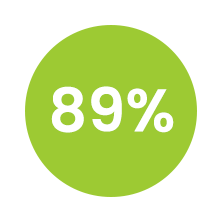By Jordan Wade
 There are a lot of things about the Camp Program that confuse people. A common question that I receive is, “What do you do during the school year?” During the school year myself and the other AmeriCorps members and staff from Camp Shawnee go into schools within three counties to teach enriching curriculum (Camp AJ, our sister camp, schools in two additional counties). This year our curriculum is on bullying. I don’t think people realize how important programs like this are for our children. Teachers have a tough job and are required to focus so much on academics that they often run out of time to teach the kids what it means to be good human beings. I am so excited that I get to be one of the people who get to work with thousands of students on what it means to be a kind person.
There are a lot of things about the Camp Program that confuse people. A common question that I receive is, “What do you do during the school year?” During the school year myself and the other AmeriCorps members and staff from Camp Shawnee go into schools within three counties to teach enriching curriculum (Camp AJ, our sister camp, schools in two additional counties). This year our curriculum is on bullying. I don’t think people realize how important programs like this are for our children. Teachers have a tough job and are required to focus so much on academics that they often run out of time to teach the kids what it means to be good human beings. I am so excited that I get to be one of the people who get to work with thousands of students on what it means to be a kind person.
Another question I often am asked is, “Do kids really need to be taught about bullying? Don’t they already know what it is?” Honestly, there is a lot that people (adults included) do not know about bullying. I can tell you that as I created the curriculum and even as I am teaching it, there are plenty of things that I am learning about this topic. This generation is faced with things that I never had to deal with at their age. I am only twenty-three. I am not that much older than the students that I am teaching, yet they live in a completely different world than I ever did. So yes, these kiddos definitely need to be taught more about bullying.
Finally, I am always asked, “What does a typical day look like for you?” This question always makes me giggle because I could not think of the last day that I had that was typical. Each day is different and that is what makes this program thrilling. Right now, we are covering six different schools. On Mondays, myself and the three other people in this program split up and go into three different seventh grade classrooms, where we each see four different groups of students. Therefore, on Monday alone we are teaching twelve classes, serving a total of 250 students. On Tuesdays, we are teachers’ aides in two fourth grade classrooms. We work with small groups and help in any way we can. On Thursdays we visit a school that has us teach grades 4-8, serving a total of 150 students. On Fridays, we split up and go to three different schools. We discuss what bullying is, the four types of bullying, and we go into detail with our examples of cyber and social bullying (we feel those are the most common types, but also least educated about). Furthermore, we talk about anger—the common inappropriate responses to anger and the positive ways that people should deal with their anger. Also, we discuss self-esteem and cooperation. We relate those last three topics to the overall topic of bullying. I feel confident in saying that I believe our program is making a difference. I have had students approach me with their own experiences with bullying, students will thank us for being there and talking to them about this, and many of them will tell us that some of what we covered, they had never heard of before or didn’t completely comprehend it prior to our class.
My favorite lesson that we teach is on anger. We discuss the four common inappropriate responses to anger and then we discuss the positive ways we could deal with our anger. I always ask my kids if they think it’s okay to be angry. A lot of students tell me it is not okay to feel that emotion, which breaks my heart because denying yourself from feeling certain emotions tends to have negative consequences. We are humans who were created based on emotion. Feeling emotions is what we are best at and it should be encouraged to feel and learn how to cope with those emotions. Obviously, if people deal with anger in a negative way then it becomes a bad thing, but dealing with it positively allows that emotion to be acceptable.
One of the tools we use to drive this point home is a glitter jar. We share this jar with the students not only because it is calming to look at, but also because it is a great way to visibly show what our brain looks like when we are anger. When we are angry, our brains get all shaken up and it becomes difficult to focus on what is upsetting us. However, when we take time to separate ourselves from the situation and do things to positively cope with our anger, then we can calm down and figure out how to handle the situation.
I am so appreciative of the gift I have been given, to serve kids by teaching them how to live positive lives full of kindness and love. I believe in CAP and this program. Thank you for taking time to read about my time here. If this is a something you could see yourself doing, take that leap of faith and apply to join us!
Jordan is serving as an AmeriCorps Camp Educator/Summer Camp Counselor and CAP long-term volunteer. She is a member of the Floyd Volunteer Community. Opinions expressed in volunteer blogs are those of the authors and do not necessarily reflect the views of CAP or the Volunteer Program.







